Heading out the door? Read this article on the new Outside+ app available now on iOS devices for members! Download the app.
To prep for our upcoming Yoga for Stress and Anxiety online course, we’re giving you weekly doses of tranquil asana, pranayama, meditation, and yoga nidra. Don’t miss our six-week course that’ll make a lasting change in the way you work, love, and live. Enroll now and be the first to know when it launches.
In the United States, up to eight percent of the total population will experience Post Traumatic Stress Disorder (PTSD) in their lifetime. PTSD can occur after a traumatic event like the loss of a loved one, combat, a terrorist attack, or natural disaster. Someone who has experienced trauma may feel stressed or frightened even when danger is not imminent. For veterans of war, the percentage is greater. About 11 to 20 percent of those who served in Operations Iraqi Freedom and Enduring Freedom in Afghanistan suffer from PTSD, according to the U.S. Department of Veterans Affairs (VA).
The VA also reports that 27 percent of veterans diagnosed with PTSD under Veterans Affairs hospital care will experience some form of substance abuse. But that is changing. More veterans are opting out of opioids to self-manage their chronic pain, stress, and depression, according to a recent study at the Washington, D.C. Veterans Affairs Medical Center. In the study, Integrative Restoration Yoga Nidra, or “iRest,” a yoga practice that utilizes relaxation techniques and meditative inquiry, was used among a small group of participants to help them manage their musculoskeletal pain levels. Meditation and mindfulness practices will evidently allow a person to respond to their pain with less reactive stress, because the parasympathetic nervous system—the body’s relaxation response— becomes activated. The same mechanisms could be employed to calm symptoms of PTSD.
And the trend is catching on nationally. A Veterans of Foreign Wars post in Denver replaced their bar with free yoga classes for instance, and groups like the Light it Up Foundation and the Give Back Yoga Foundation use the transformational power of yoga to help treat veterans with PTSD.
Here, photographer Robert Sturman honors and celebrates American veterans of war by featuring several active duty and retired service members practicing yoga. “It is my moral obligation to pay attention to those who are crying out for healing,” he said.
Handstand
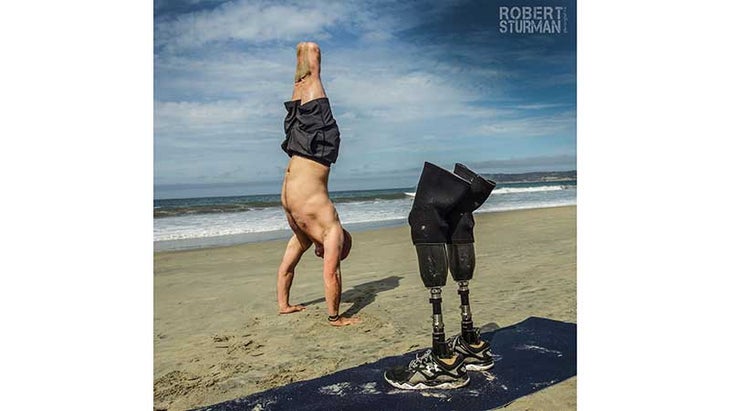
Adho Mukha Vrksasana
“If I could ask you to do anything, it would be to invite a veteran to yoga. It might just save their life,” said Staff Sergeant Dan Nevins last year at Coronado Beach, California. The veteran-turned-yoga-teacher served in the U.S. Army during the second war in Iraq, where he lost his legs in an explosion when his vehicle caught fire. Both yoga and the Wounded Warrior Project have been integral to his healing.
Extended Hand-to-Big-Toe Pose
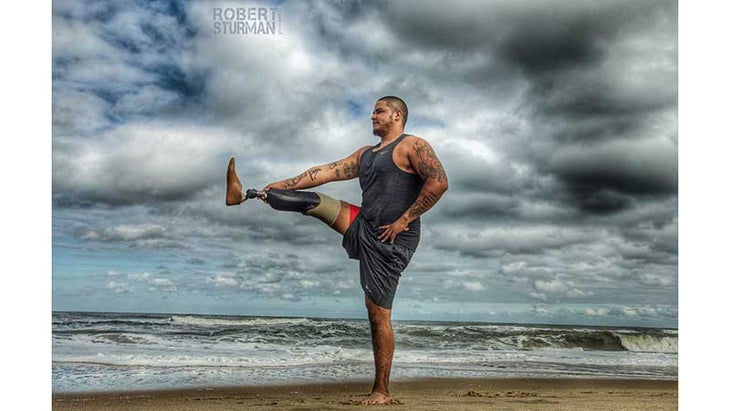
Uttitha Hasta Padangusthasana
Former Marine Alex Nguyen lost his leg during his third tour in Iraq when an IED—improvised explosive device—detonated near his truck in 2011. Nguyen is pictured in 2015 in Virginia Beach, Virginia.
Warrior Pose II
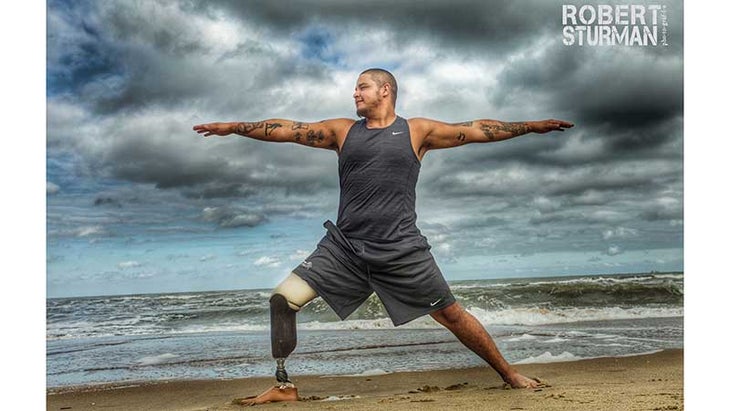
Virabhadrasana II
Alex Nguyen, Virginia Beach.
Warrior Pose II

Virabhadrasana II
Navy veteran Austin Reese expresses his variation of Warrior II in Virginia Beach. He was injured in a routine skydiving accident during training in 2013. But determined to heal, despite the loss of mobility in his legs, he competed in the military Paralympics, the Warrior Games last year, excelling at hand cycling and wheelchair racing.
Peaceful Warrior

Viparita Virabhadrasana
U.S. Air Force Staff Sergeant Katherine Cassandra has been an active member of the USAF Reserves for eight years on active duty. She was photographed here in St. Petersburg, Florida. “In a world where success is measured by how busy we are, it’s easy for me to compare myself to others and begin that long descent into the rabbit hole of negative self talk,” she said. Cassandra says is grateful to have yoga in her life, because it always brings her back to the things that are most important to her.
Upward Facing Dog Pose
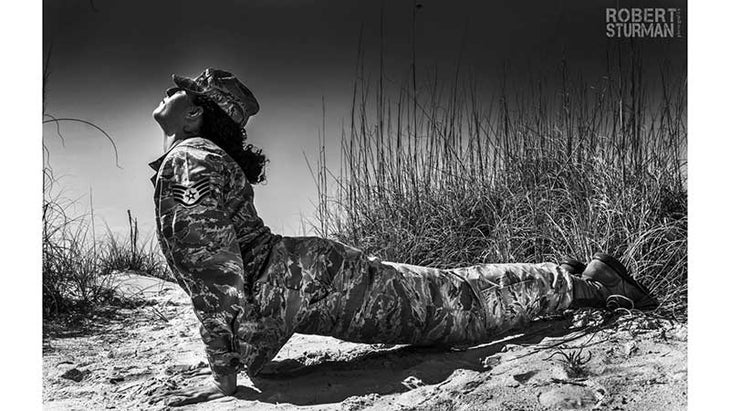
Urdhva Mukha Svanasana
Staff Sergeant Katherine Cassandra, on Florida’s Gulf Coast. “Practicing yoga to me means trusting the process and learning to be human,” she said. “When I am able to conjure up just an ounce of patience and awareness, I begin to experience its benefits.” Though these feelings can be fleeting at times, Cassandra says she knows the effectiveness of the practice and that it really works, giving her enough strength to practice time and time again.
Upward Facing Bow, Variation
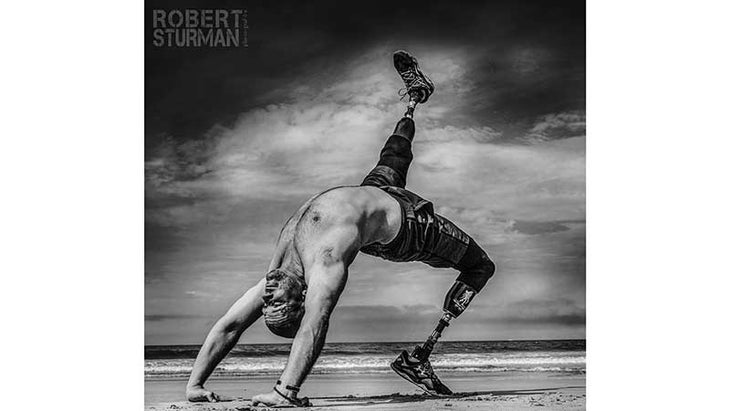
Urdhva Dhanurasana
Dan Nevins, at Coronado Beach. “You don’t change the world to change your life,” he said. “You change your life to change the world.”
Warrior II
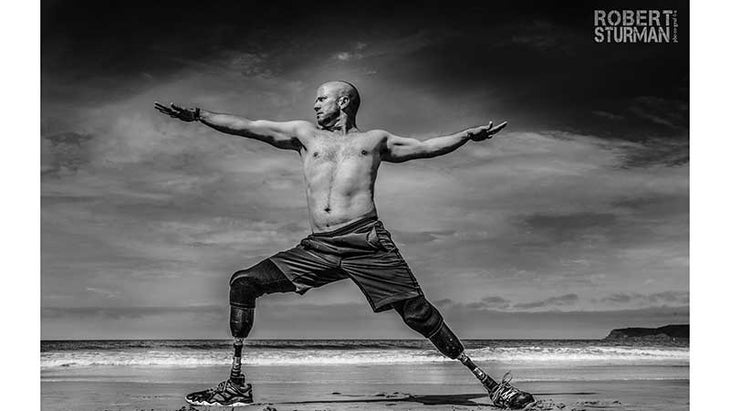
Virabhadrasana II
Dan Nevins powerfully expresses Warrior II in Coronado.
Half Moon Pose
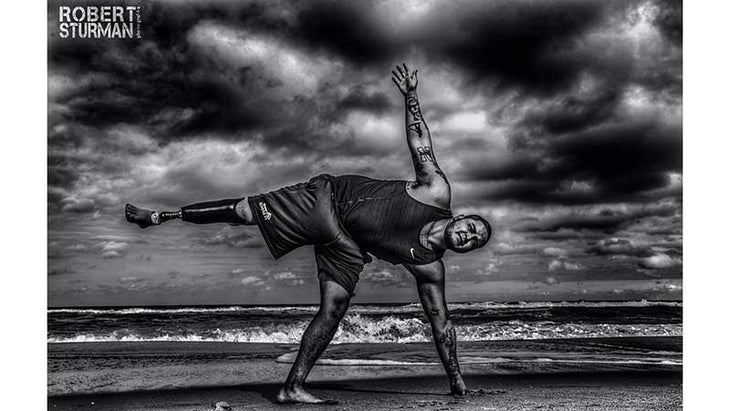
Ardha Chandrasana
Alex Nguyen tests his remarkable balance in Virginia Beach.
Warrior Pose I
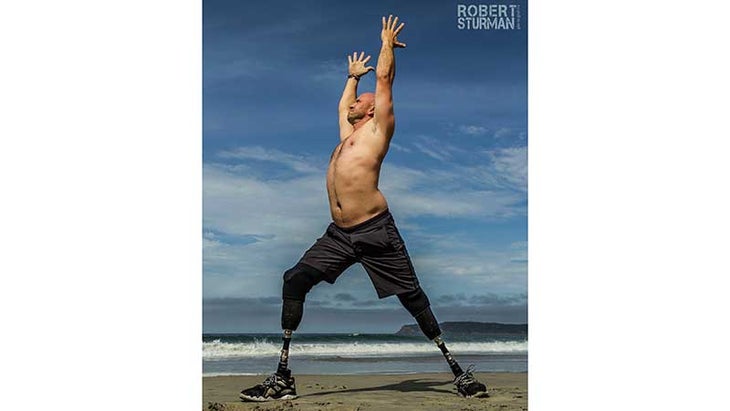
Virabhadrasana I
Dan Nevins reaches for the sky in this strong, grounding pose. “I was so touched by Dan’s kind spirit, his sincere eyes, his devoted practice,” Sturman said.
Urdhva Dhanurasana

Dan Nevins proves there are no limits in this heart-opening pose at Coronado Beach. “There was so much heart in the poses he was offering—I felt like with each click, we were healing the world,” Sturman said.
Lord of the Dance Pose
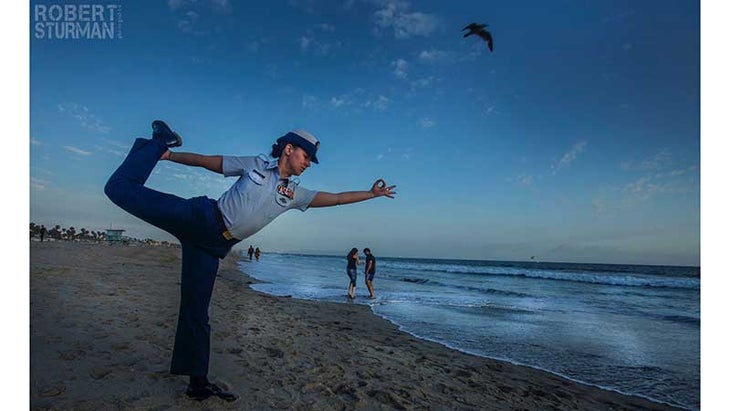
Natarajasana
Boatswain’s Mate First Class Kirstin MacLean of the U.S. Coast Guard, pictured on the beautiful Southern California Coast. “It can be difficult to leave my life in Arizona behind to live somewhere completely new with unpredictable work hours,” she said. “On my last activation I wandered into a local studio and yoga found me.” MacLean practices four to five times a week, helping her to connect with new people and strengthen her stamina while on duty. “Yoga also helped me find balance between my duty schedule and time for myself,” she said. “In my opinion, my time on the mat made me a better Coastie.”
Side Plank, Variation

Vasisthasana
Navy F-18 Pilot, Lieutenant Commander Liz Corwin at Virginia Beach. She used yoga as an escape from the stress and pressure of the Navy, and began sharing her practice with other pilots and friends in 2008. She has since left the service and now teaches yoga full time.
Hanumanasana, variation
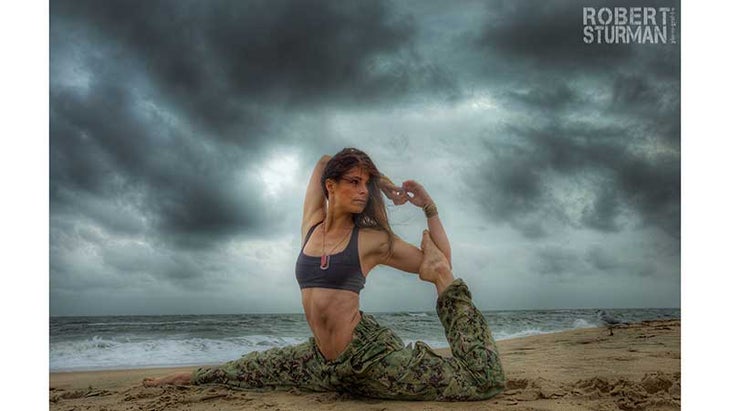
Liz Corwin makes it look easy at Virginia Beach.
Tree Pose
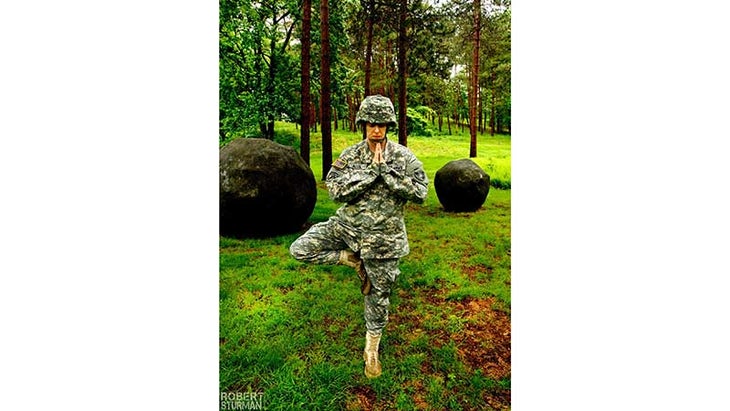
Vrksasana
Missy Rosol is an active duty soldier in the U.S. Army with nearly 18 years of service. Her yoga practice has helped her to be more accepting of others, and less than ideal situations and circumstances, she says. “Some days on my mat it’s a challenge,” she said, “but I’m better equipped to ‘roll with the punches’ and accept what is,” Rosol explains.
Viparita Virabhadrasana

Missy Rosol opens her heart as she tilts her head toward the sky. This image was shared in honor of Memorial Day last year, to bring awareness to the millions of men and women who have served our country. Rosol’s practice allows her to continue to move forward and make things better for the soldiers and the community she serves.
Seated Meditation

Major Missy Rosol establishes inner peace through a devoted meditation practice. Her practice helps to strengthen her on this inside so she can better serve her family and community, she says.
Yoga Journal’s Yoga for Stress and Anxiety online course was created by Mindful Yoga Therapy (MYT). MYT was designed for veterans and has had a lasting positive impact on many returning from war. But it is not just for veterans; It can be adapted, as it is in the course, to be a powerful tool for managing general stress and anxiety related to work, relationships, addiction, other forms of trauma, eating disorders, disease, pain, and more.